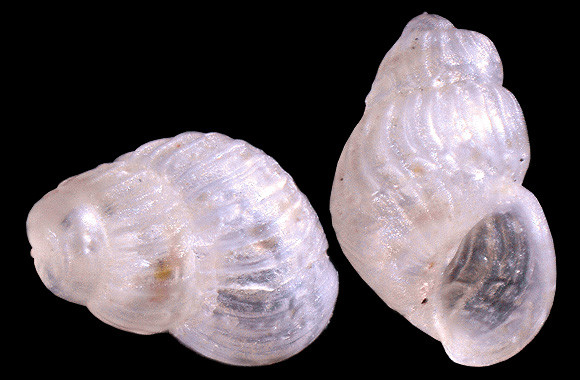
Ectoparasit in the twilight zone and the circalittoral.
Original taxon: Chrysallida moolenbeeki.
« The shell is small, conical, with a blunt top. The protoconch is of type B, covered with four relatively heavy spiral ridges. There are two-and-a-half to almost four slightly convex teleoconch whorls, on the upper and lower side abruptly bending inwards. This gives the shell a somewhat turreted profile. The suture is deep and variably oblique (sometimes nearly horizontal, sometimes strongly inclined). The ribs are narrow,dependent on their number, the interstices are as broad as, or narrower than, the ribs. These are vertical or a little prosocline, on all whorls somewhat curved, and fading on the periphery of the last whorl. The initial whorls have one spiral ridge, just above the abapical suture (occasionally a second spiral line is visible, hidden in the suture of the penultimate whorl). The last whorl has two spiral ridges, the lower one on the same level as the upper edge of the aperture. The aperture is oval-spherical; the insignificant tooth-pleat is only visible after turning the shell. There is sometimes a faint umbilical slit. » – van der Linden & Eikenboom:
“On the taxonomy of the recent species of the genus Chrysallida Carpenter from Europe, the Canary Islands and the Azores”, Basteria 56, 1992, p.49. The spirals on the proto are distinctive.
Young specimen collected at 50m deep, Isola Ustica, north of Palermo, NW. Sicily. 1mm.